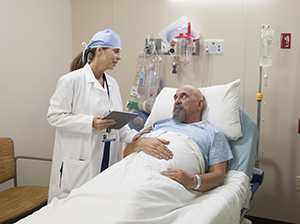Surgery may be done to remove either a cancerous or noncancerous (benign) tumor. Your healthcare team will let you know what to expect. They’ll also discuss the possible risks and complications of the surgery, the benefits of the surgery, and any other treatment options. They'll also let you know which healthcare providers will take part in the surgery.
Before the surgery you'll be asked to read and sign an informed consent form. This form also explains the surgery, the risks, and the possible complications. Signing it means that you understand and agree to both the possible positive and negative outcomes. You'll also be asked to sign a consent form so that you can get anesthesia during the procedure. You should take the informed consent process very seriously. Talk with your healthcare provider if you have any questions or concerns before you sign the forms.
The surgery plan
Your surgery may take from a few minutes to several hours. At the start, you'll be given anesthesia to keep you comfortable. Depending on the size of the tumor and where it is, surgery can include:
-
Removing the tumor. If the tumor is benign, you may not need any other treatment after it’s removed. If the tumor is cancer, you may also need radiation or chemotherapy.
-
Helping you breathe while the tumor is removed. To do this, the surgeon may make a small hole in the front of your throat. The surgeon may put a tube through this hole to help you breathe. This is called a tracheostomy or trach.
-
Removing some lymph nodes from your neck if your tumor is cancer. This procedure (neck dissection) is done if the tumor has spread to nearby neck lymph nodes. This procedure will help keep the cancer from spreading. The information gathered during the procedure will help guide further treatment.
-
Doing surgery to replace tissue removed. This could include using tissue from your forearm, thigh, chest, back, or other site to replace tissue removed during the surgery. This can help you regain better use of your mouth, throat, or neck after treatment.
Possible risks and complications
Some of the possible risks and complications of surgery include:
-
Infection
-
Bleeding
-
Trouble speaking or swallowing
-
Pain or numbness at the incision site
-
Loss of muscle tone or range of motion in your face, neck, or arm
-
Reduced sense of taste, smell, or feeling
-
Change in how you look
Featured in


